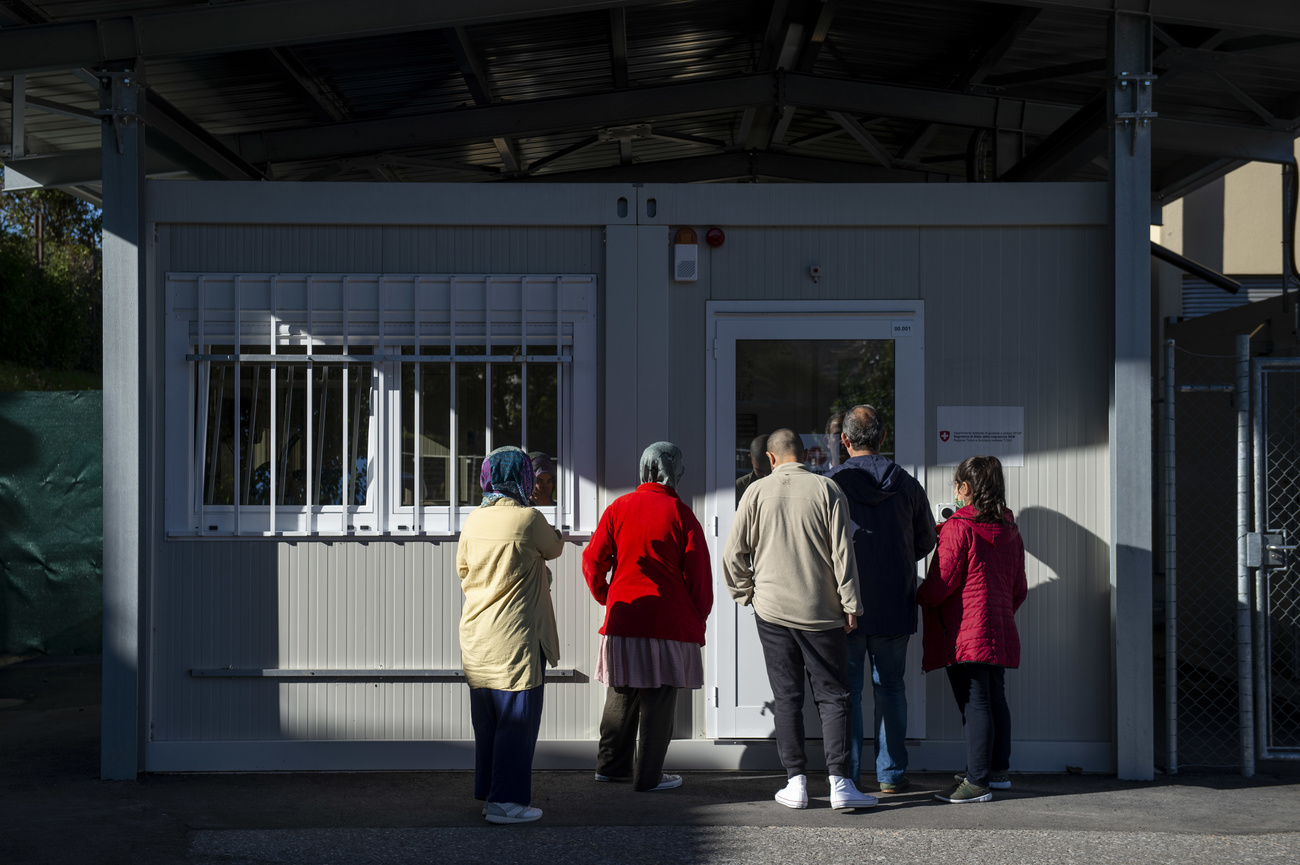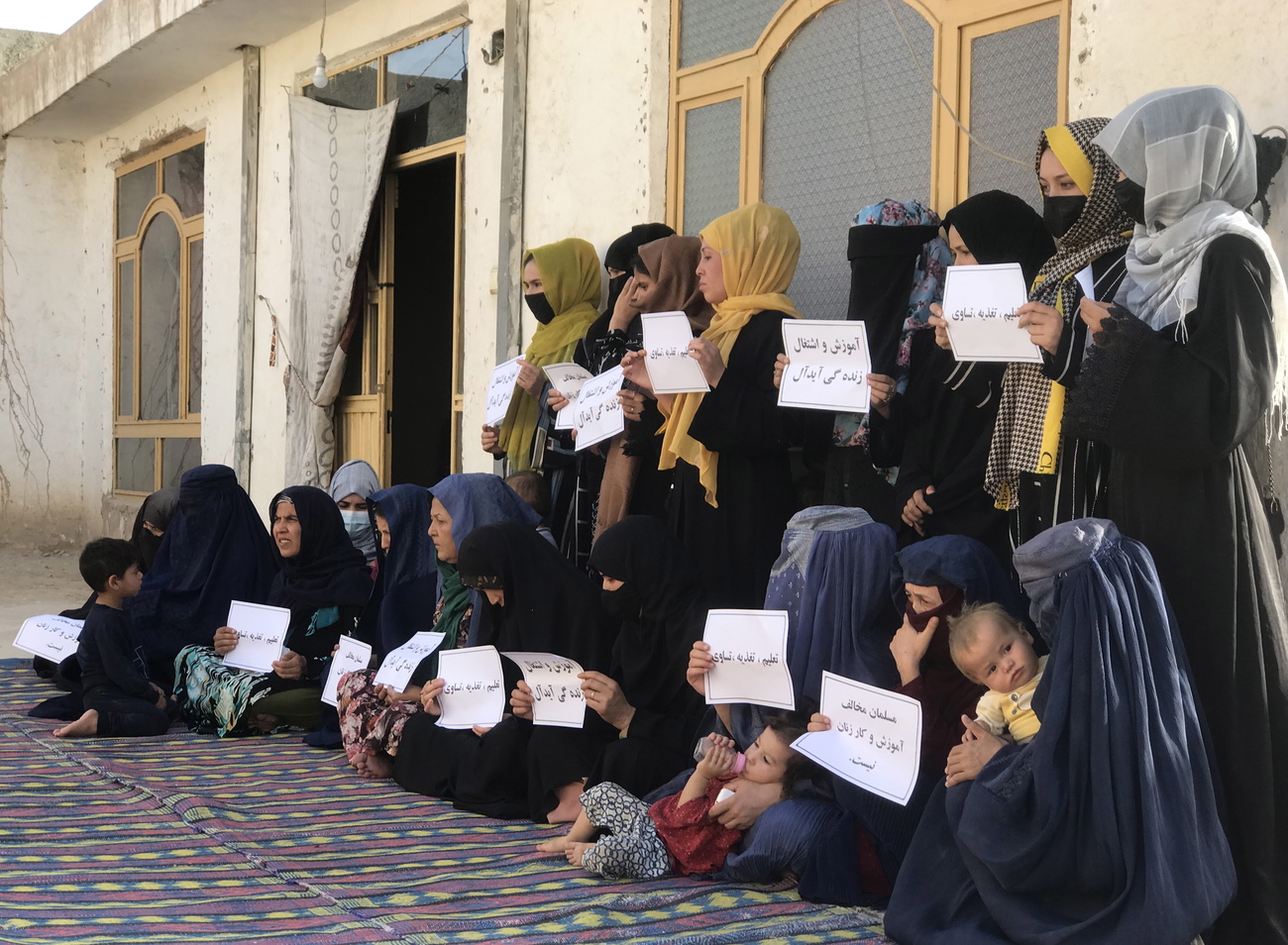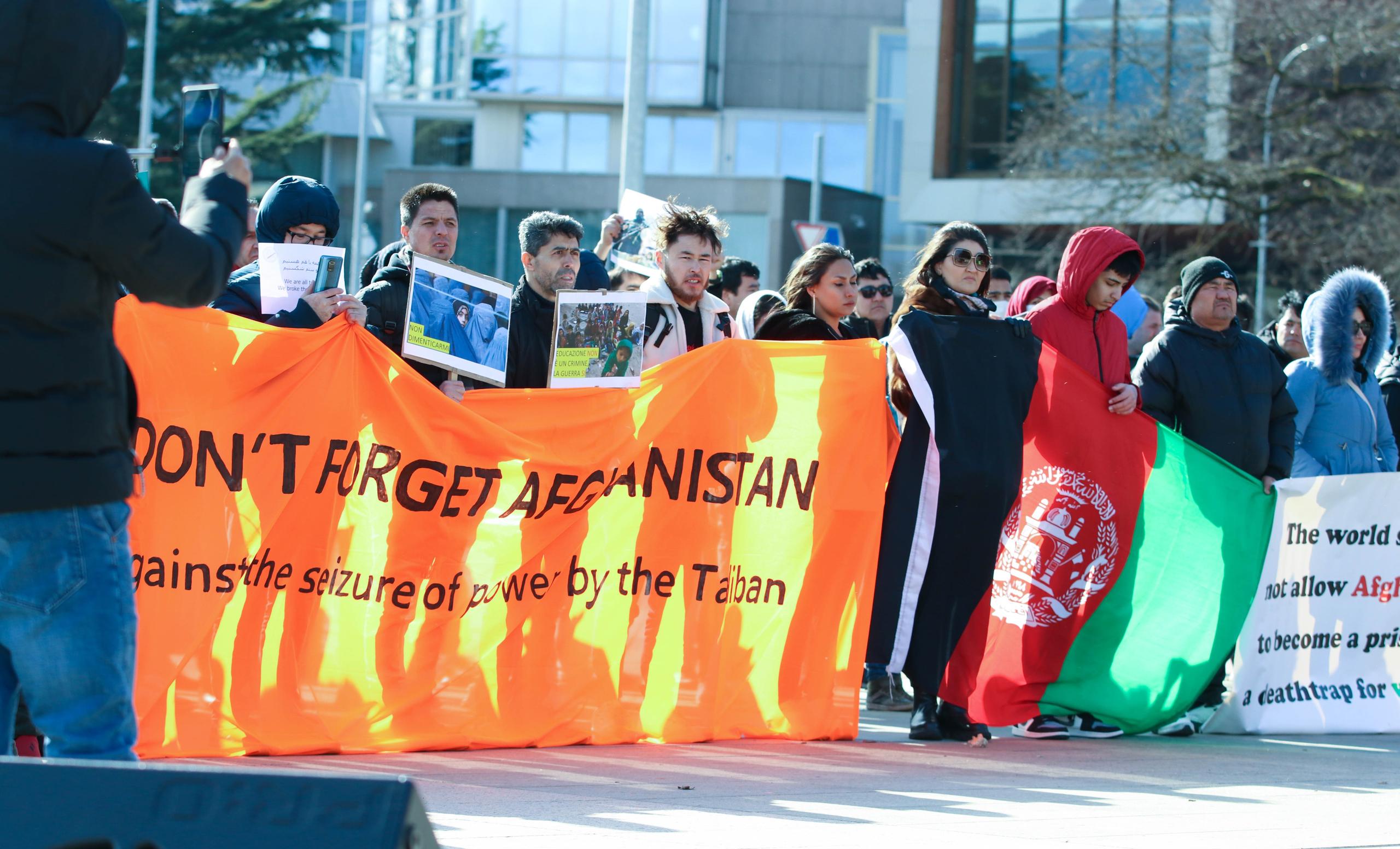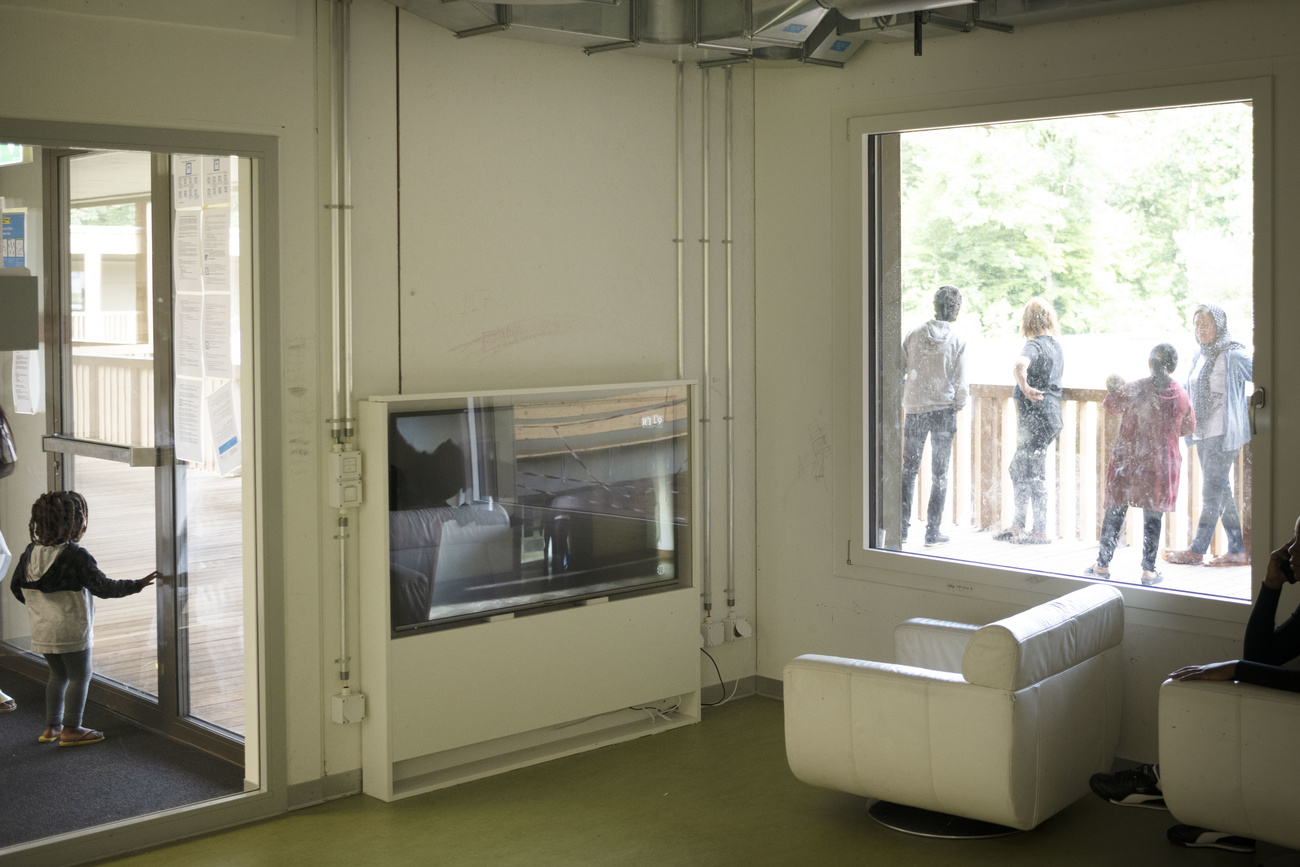
Will asylum for Afghan women cause more migrants to choose Switzerland?

Some parliamentarians are contesting Switzerland’s policy of granting asylum to Afghan women and girls, arguing it will create a pull effect. SWI swissinfo.ch examines this claim.
In July 2023 the State Secretariat for Migration (SEM) decided to begin granting refugee status to Afghan women and girls, following an individual assessment of each case. The decision marks an important shift in Switzerland: whereas in the past most Afghan asylum-seekers received temporary admission, a short-term renewable permit that protects them from expulsion, now Afghan women can in principle obtain a more durable permit.
But not everyone agrees with the SEM’s decision. Some right-leaning politicians in Bern argue it will have a pull effect.
“It will lead to migrants from all kinds of countries coming to Switzerland because the authorities are being generous,” right-wing Swiss People’s Party parliamentarian Gregor Rutz tells SWI swissinfo.ch in an email.
Rutz tabled a motion in the House of Representatives last fall demanding that the SEM scrap its policy on Afghan women for this reason. A similarly-worded motion by the centre-right Radical-Liberals is currently before the Senate.
The two texts suffered a setback in late 2023, when the Federal Administrative Court ruled that Afghan women are entitled to asylum because they face persecution in their home country – confirming the SEM’s new practice. But Rutz and other parliamentarians who support the motions are pushing ahead and want to persuade a majority of lawmakers to back their demand.
The situation in Afghanistan is not in question
The SEM’s decision to change its practice came after the European Union Agency for Asylum (EUAA) issued a non-binding guidance in January 2023 that Afghan women have a well-founded fear of persecution. The EUAA finding prompted several other European states, including Germany, Sweden and Finland, to begin granting asylum to these applicants.

Since seizing power in August 2021, the Taliban have progressively limited women and girls’ rights in Afghanistan, including the right to education and the right to participate in much of public life. Like the Swiss Federal Administrative Court, the European Court of Justice recently ruled that Afghan women suffer from persecution in their home country.
Now a global movement is taking hold to label the Taliban’s treatment of women as gender apartheid. In February, a group of UN human rights experts urgedExternal link states to recognise gender apartheid as a crime against humanity, arguing the situation in Afghanistan amounted to “an institutionalised system of discrimination, oppression and domination of women and girls”. In March, Afghan rulers announced they would begin implementing their version of Sharia law and reintroduce public stoning of women for committing adultery.
“If we don’t give [Afghan women] refugee status, then to whom can we give it?” Jean Tschopp, a Social Democratic lawmaker, toldExternal link 24Heures newspaper after a parliamentary committee discussion on Rutz’s motion.

More
Why asylum in Switzerland remains elusive for Afghan refugees
But Rutz says his text does not call the plight of Afghan women into question.
“The situation in Afghanistan is bad – that has never been disputed,” he says. Switzerland is already doing what’s necessary to protect Afghan women arriving in the Alpine state, he argues. “No woman from Afghanistan is currently being sent back to her home country – regardless of the status of her application,” he says. Switzerland suspended deportations to Afghanistan following the return of the Taliban.
A migration pull effect has yet to materialise
As evidence of a pull effect, Rutz points to asylum data from February 2024: Afghans were responsible for 52% of all new applications that month, thereby making up the biggest group of asylum applicants in Switzerland – as they have been since 2021.
“These figures speak for themselves,” Rutz says. “Unfortunately, the pull effect was massive in the first quarter of 2024.” The figures he refers to, however, covers just a single month, and not a whole quarter.
What is evident from the data is that Afghans filed 45% more asylum requests in February 2024 compared to the same month in 2023. The majority of these applications were linked to the migration authority’s change in policy, says its spokesperson, Anne Césard.
Data for all of 2023, on the other hand, shows no clear evidence of a pull effect. In fact, fewer women from Afghanistan applied for asylum in 2023 (737) compared to 2022 (809). The SEM received a total of 7,934 asylum requests from Afghan nationals last year, up from 7,054 in 2022. Nearly 1,800 asylum requests in 2023 were made by Afghans in Switzerland who had received temporary admission and who, with the change in policy, were eligible to apply again. These requests, saysExternal link the SEM, are not an additional burden on the system.
Since neighbouring countries are also granting asylum to Afghan women, says Césard, “it can’t be assumed that Switzerland will be a particularly strong focus for [this group]”.
No pull effect in Nordic countries either
Finland, Sweden and Denmark were the first states in Europe to systemically grant asylum to Afghan women after the Taliban takeover. In Sweden, the decision in January 2023 to give Afghan women refugee status sparked no significant political debate, says Linnéa Sveide of the NGO Swedish Refugee Council.
The reaction was similar in Denmark. After initial questions in parliament about whether the country would now be an “attractive” destination for Afghan women, the debate died down, according to the Danish Refugee Council.
Neither Denmark nor Sweden has seen a pull effect from these changes in practice, say the NGOs. Finland recorded a small increase in asylum requests in 2023, but the country is not an important destination for Afghans, according to the Finnish Refugee Council.
Germany, which hosts the largest Afghan population in Europe, changed its practice in spring 2023. There the overall number of asylum requests has gone up since late 2022 due to a significant increase in migration pressure at the European Union’s external borders, says Stefan von Borstel of the German Federal Office for Migration and Refugees. In 2023, first-time applications from Afghans increased by 41% compared to 2022, which von Borstel says is below average – requests from Turkish citizens, for instance, were up by 155%.
Fears over ‘secondary migration’
Damian Müller, a Radical-Liberal parliamentarian who’s defending the motion against the SEM’s policy in the Swiss Senate, says it may just be too early to see a pull effect. “Even if there should be no pull-effect,” he writes in an email to SWI, “those who might be attracted by the good conditions in Switzerland should be dissuaded from making the risky journey to Europe.”
Travelling through the Balkans and the Mediterranean is “extremely dangerous, [with the] risk of violence, exploitation and assault along the way”, says Lionel Walter, a spokesperson for the NGO Swiss Refugee Council. And that’s if they’re able to leave Afghanistan at all, he adds.

More
New asylum accommodation to cost Swiss government over CHF200 million
Choosing Switzerland based on what it has to offer is simply not a calculation that Afghan women are making, says Afghan native and refugee advocate Aresu Rabbani.
“They have no idea whether there is a new or better policy here,” she says. “Many cannot read or write in English, Farsi or Dari. They just want to escape from Afghanistan.”
Rabbani herself fled the country as an illiterate child in 2008. Now a Swiss citizen, the trainee midwife advocated for a change in the SEM’s practice toward Afghan women asylum-seekers together with her party, the Social Democrats. Since August 2021, she’s helped several Afghans navigate the Swiss asylum application process.
Pull effect or not, the government is now projecting 33,000 new asylum requests for 2024 –up from 30,223 in 2023, part of a progressive increase since 2020 – and seeking an additional CHF255 million from parliament to cope with the demand. But Müller says cost is not the main motivation behind the motion. Rather, he says, it’s “respect for the principle of asylum”, which he says should not be granted to those who have already received protection in a third country.
The vast majority of the estimated 1.6 million Afghans who fled their country after August 2021 have ended up in neighbouring countries. The motion claims the SEM’s policy will reinforce “secondary migration” by such migrants, who will now choose to claim asylum in Switzerland.
But, according to Césard, the SEM does not process requests from those who’ve received protection in a “safe third country”. This includes Greece, at the EU’s external border, where rights advocates say Afghans face barriersExternal link to fair asylum procedures.
Edited by Virginie Mangin

In compliance with the JTI standards
More: SWI swissinfo.ch certified by the Journalism Trust Initiative


























You can find an overview of ongoing debates with our journalists here . Please join us!
If you want to start a conversation about a topic raised in this article or want to report factual errors, email us at english@swissinfo.ch.